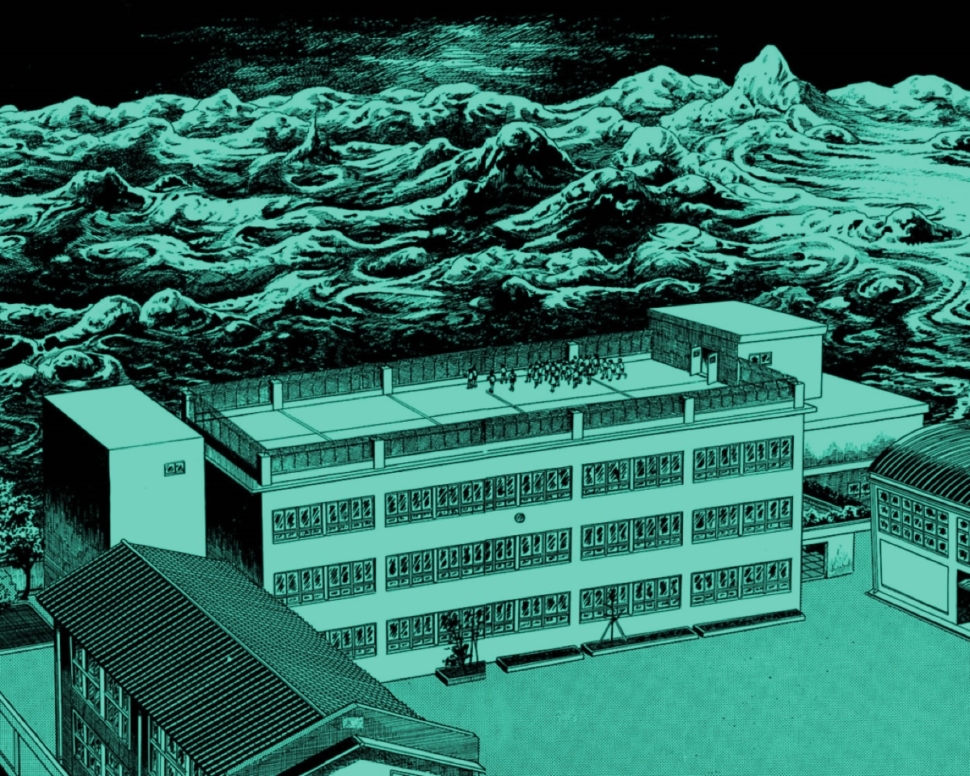There’s a nostalgic ache to the phrase “ignorance is bliss.” In the poem where Thomas Gray coins the term – ‘Ode on a Distant Project of Eton College’ – it doesn’t have the same slightly cutting application that its more contemporary usage carries, where it gets used as a way to comment on the ease with which a perceived idiot might move through the world.
Instead, Gray uses it to illustrate the innocence and happiness of youth as something fragile: “Since sorrow never comes too late/And happiness too swiftly flies/Thought would destroy their paradise.” But there’s something uniquely frightening about losing the blissful ignorance of youth; the feeling of dread that comes from understanding that the world doesn’t work in the way you used to think – or used to dream. The future, rather than being something full of possibility, becomes a long, dark road into the unknown.
Groundbreaking horror manga, The Drifting Classroom, written and illustrated by Kazuo Umezu, grapples directly with this exact kind of horror as an elementary school is flung into a distant, post-apocalyptic future.
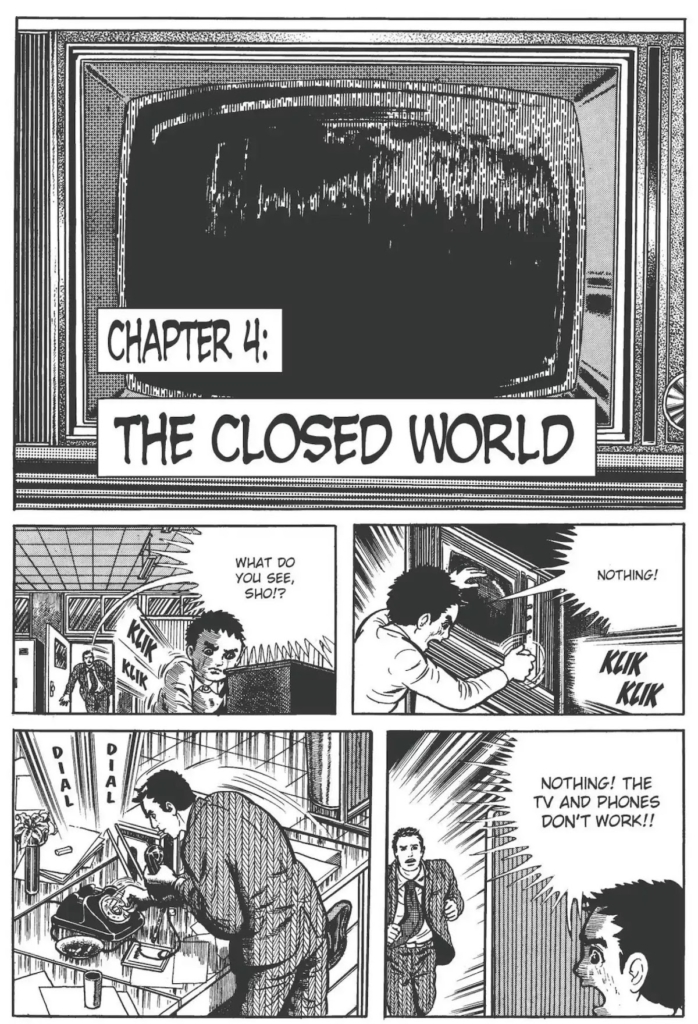
Restless sixth-graders are in a social studies class, and they’re asked a question by their teacher, Mr. Wakahara: “what do you imagine the future would be like?” Then he goes around the room, asking the children what they want to be when they grow up. It’s only moments after this that the teachers discover what’s happened to the school, looking out the window to a barren wasteland. Wakahara’s questions become hollow, the precarious nature of childhood and adolescence turns into something horrifying. This moment – and the way that the teachers respond to the uncertainty and fear around them – challenges one of the fundamental certainties that these children have: their relationship to adults.
The Drifting Classroom opens with narration from sixth-grader Sho Takamatsu, the series’ protagonist, as he looks back on life before being flung into the future. His memories and narration are centered on remembering his relationship with his mother Emiko, and a fight they had before he went to school that fateful day. The memories he has of his mother and his desire to return to her exists in stark contrast with the relationship that Sho and the other children have with their teachers. Once his class is made aware of exactly what it is that lies outside the school gates, they all start weeping; crying out for home and for their parents. This kind of loss forces the characters out of the safety of childhood, the certainty that they once associated with adults; in remembering the loss of his mother, Sho says “I couldn’t believe that could ever happen.”
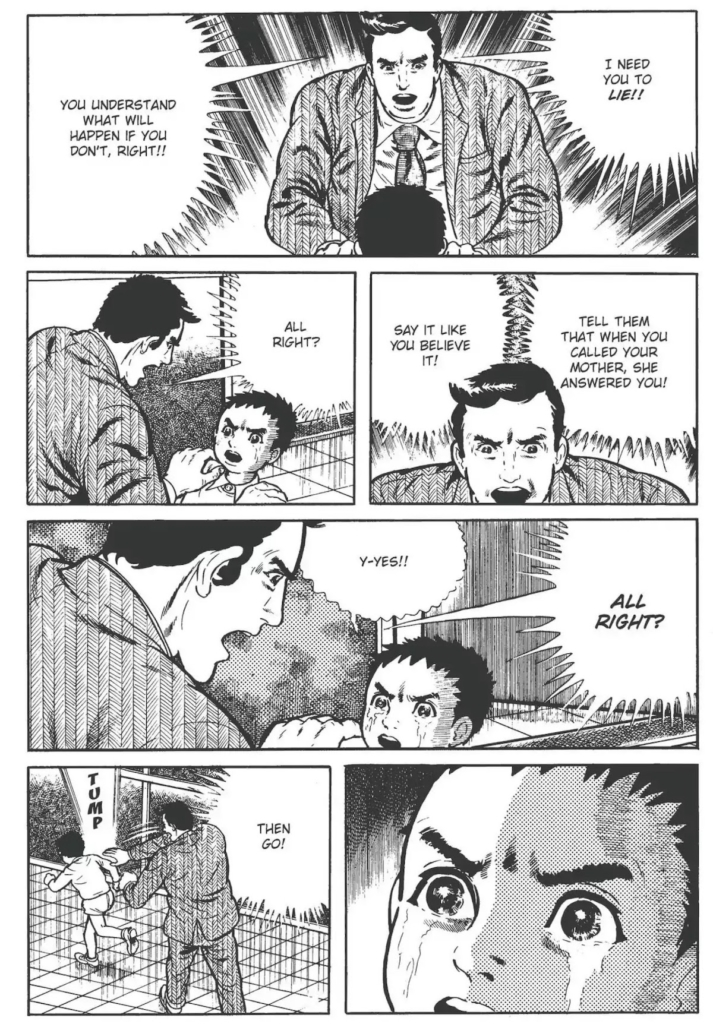
This almost existential loss of grownups as figures of safety is placed into stark relief by the ways the relationships between students and teachers violently deteriorate. There’s a unique horror in discovering that the people you thought were there to protect you can so easily lose that capacity, and turn into something else – something monstrous.
Standing guard over the school gate, insisting that if the students go out there, they’ll die, Wakahara is left shouting in vain for the children to calm down and be quiet, striking those that get too close to him across the face. This escalates to the first real explosion of violence in Drifting Classroom when another teacher, Mr. Arakawa, removes his glasses and breaks their glass, before using what’s left to stab the arm of the child that he’s holding – his own son – in order to silence the screaming, crying children that surround him. This burst of violence, this violation of safety, reveals one of the horrors of coming of age: that not all grownups will be able to protect you.
This idea of the uncertain, tense relationship between adults and the children in their care is taken to even darker places in the more contemporary horror story The Promised Neverland. In the beginning, the orphanage at Grace Field House is something of a paradise; the children there see themselves as a family, watched over by the loving Isabella who they all call “mom,” and firmly believe has their best interests at heart. In the anime’s first episode, protagonist Emma and her friends stand at the gate of the orphanage, where the outside world looms and expands beyond them. But the end of the first episode takes this assumption and leaves it in pieces at the feet of the children.
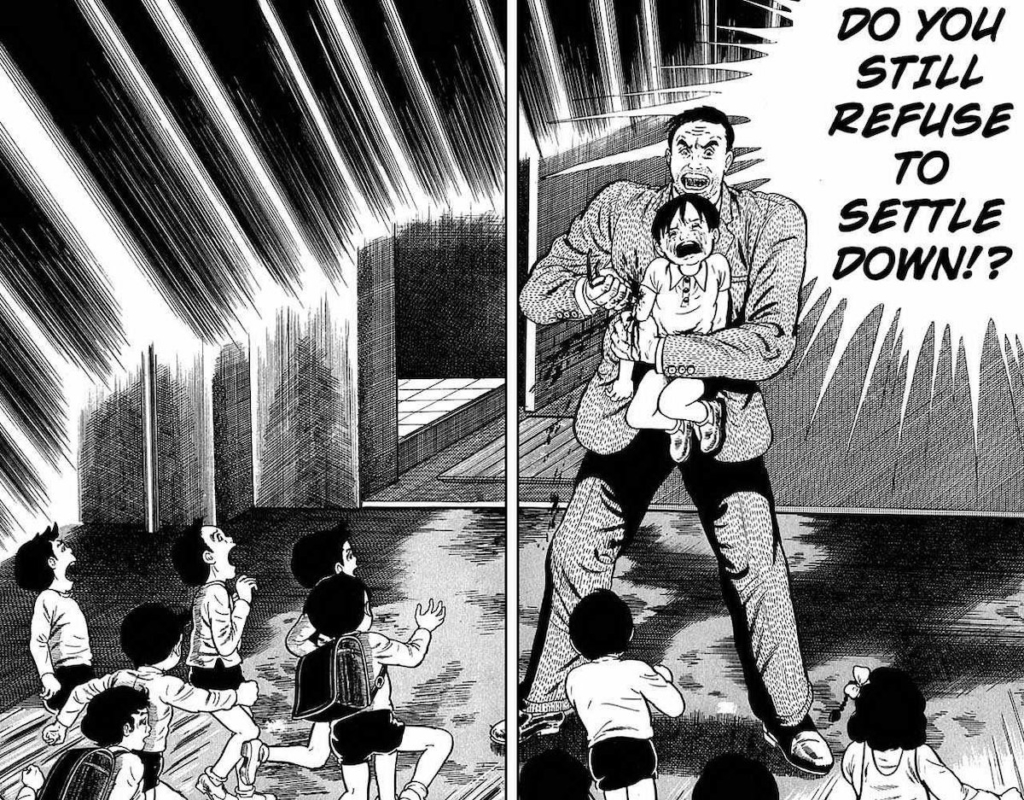
One of the reasons the world of Promised Neverland seems so utopian is the eponymous “Promise” – an agreement made between the worlds of humans and demons as a kind of peacekeeping. The demons leave the human world alone, but farms will be maintained by humans in order to keep the demons satiated. There comes a time when each orphan will leave Grace Field House, under the guise of being adopted. But the end of episode one reveals that the orphanage is a farm for demons, and the orphans are a sacrifice to keep the peace.
The horror here comes not just from the presence of demons, but from the way that this forces Emma and her friends to reckon with the truth about Isabel, and the understanding that she wasn’t there to keep them safe. This revelation shatters their innocence, and ends the time with which they might think of themselves as children; forced to look inward and to each other for care and safety when the support that they thought they had is taken out from under them in a moment of shocking horror.

Both Classroom and Promised Neverland create their horror by changing the ways in which time functions for these adolescent characters; instead of being on the cusp of something – and growing as people to face whatever that might be – they’re thrown into the future both temporally and personally. But not all horror approaches time this way. The murder-mystery Higurashi: When They Cry (an anime adaptation of a visual novel by Ryukishi07) also makes horror from the ways in which time is distorted for its adolescent characters. Instead of being propelled into the future like the characters in Classroom, or living on borrowed time like the orphans in Promised Neverland, however, the precocious adolescents in Higurashi are trapped in a loop, an endless cycle of violence and madness.
Murder is a foregone conclusion in Higurashi; the first episode shows protagonist Keichi covered in blood, standing over the bodies of his friends. This isn’t the only time that Higurashi opens on this kind of tableau; a few episodes later, Rika, one of Keichi’s friends, stabs herself repeatedly in the side of the head with a large knife, while Mion looks on laughing.
The narrative of Higurashi takes place in these cycles; descents into madness that are erased and repeated over and over again. All over an endless summer in 1983. Summer carries with it a certain connotation for the young denizens of Hinamizawa; so often in adolescence it becomes a shorthand for growth and change: something full of promise, and the possibility of becoming someone new in its wake. Higurashi takes this and turns summer into a looping, endless horror. It traps the characters at this precipice, still with one foot in childhood, ending on the literal death of innocence.
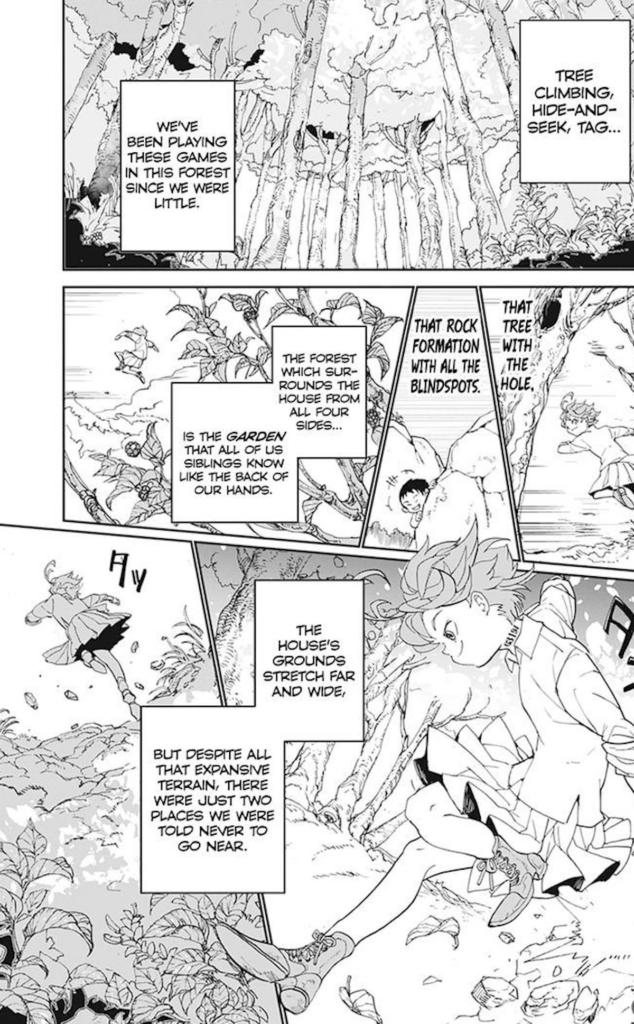
In Higurashi, the characters are obsessed with the mysteries of the past, even as they continually replay into the future. They say that in the town of Hamizawa, during the annual Cotton Drifting Festival – a folkloric tradition – someone will always disappear. As a new arrival to the town, this is all new information for Keichi, information that sinks its claws into him. Before his arrival, another student his age – Satoshi – left the town. While most say that he simply transferred away, the more time Keichi spends living through the summer of 1983, the more this idea becomes a fabrication to him; shorthand for Satoshi’s disappearance or death. Keichi’s increasingly fraught grip on sanity is pushed closer to the limit when he’s asked by a terrified Ryuga why he’s carrying Satoshi’s baseball bat. Keichi is told that Satoshi’s behavior became increasingly paranoid and erratic before he disappeared, with the refrain that Satoshi was “just like you.”
This connection between past and present is echoed in The Drifting Classroom. Not only does Sho’s narration link him to the past – and the life that he was forced away from – but fellow student Nishi develops psychic powers, which allow her to link her friends to the past, keeping Sho in conversation with his mother – meaning she’s able to try and help them stay alive.
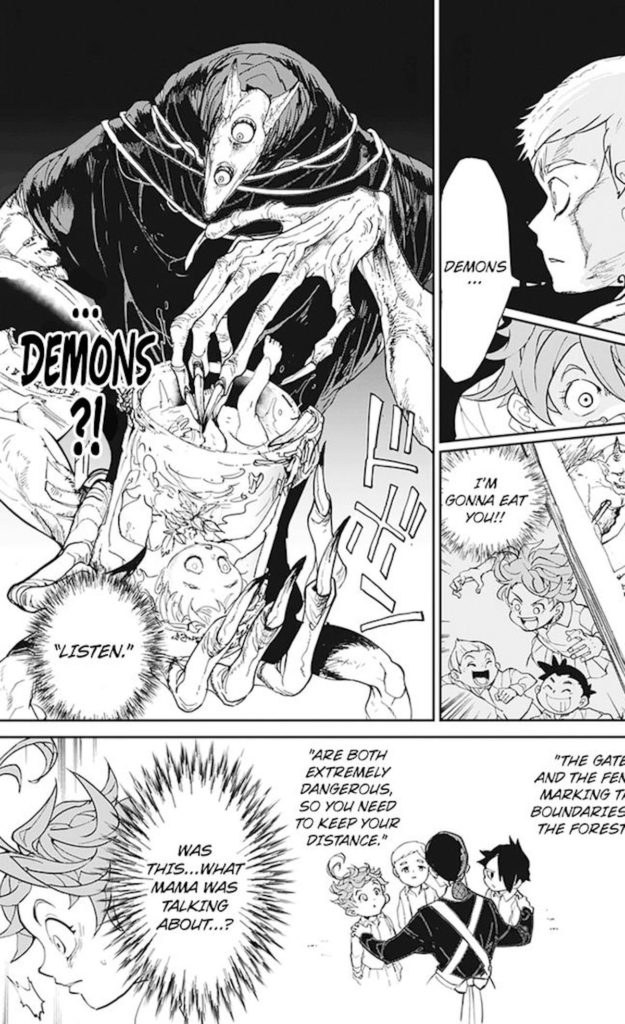
At the center of all three of these texts, and propelling the horror forward – through time and generations – is the impact of knowledge; what happens when you learn that the world has the potential to be cruel and uncaring. In the climax of Promised Neverland’s first episode, the knowledge that Emma is burdened with is lingered on long before its revealed explicitly to the audience. The moments that shatter her understanding of the world – discovering her friend dead in the back of a truck; seeing demons for the first time; and most importantly seeing Isabella with the demons – are drawn out, capturing the moment where innocence ends.
More than that, she’s desperate to deny this knowledge, to hold on to the now false life that she used to live; repeating to herself like a mantra that Isabella is still the same mom, that there wasn’t a body in the trunk. Classroom uses the burden of knowledge in the same way as a springboard to horror; not only does the discovery of what has happened make these children cry for a life they can no longer have, but it unravels the safety net of the adults. There’s a dark irony to one of the teachers saying that his students could think of him as a father, when another teacher – Arawaka – stabs his own son in order to try and exert control over the children.
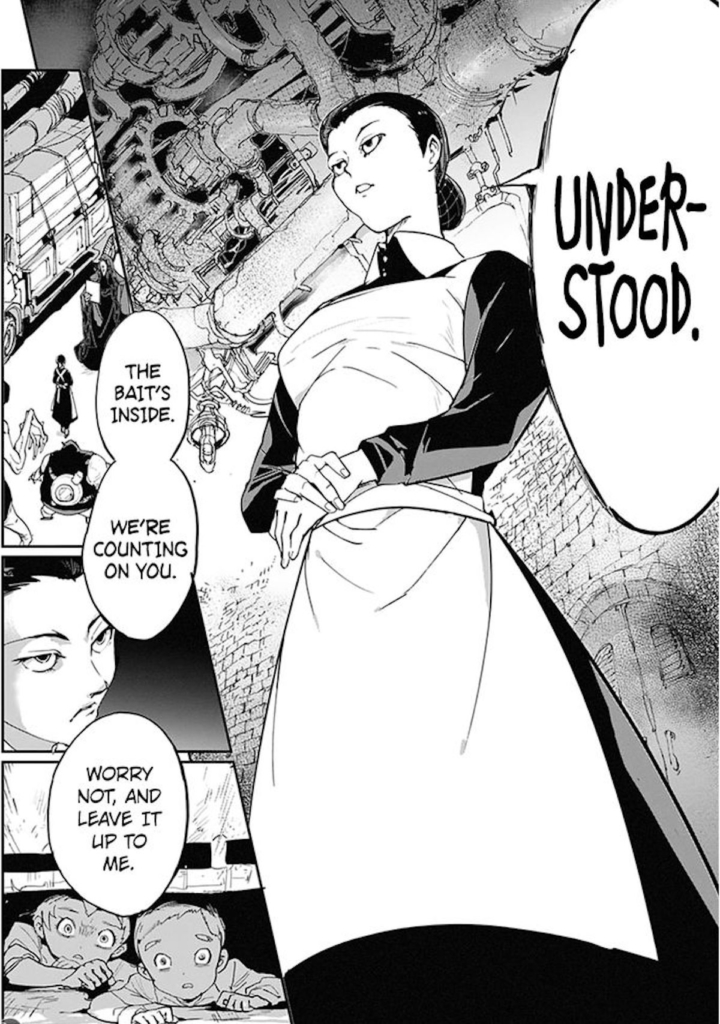
Higurashi takes this relationship with knowledge – as a point from which there’s no turning back – and turns it on its head. Knowledge comes at a moment that’s both too late, and meaningless. At the end of the first timeline, when Keichi lies in a phone booth, having clawed out his throat, with a police officer on the line, the truth about the killings becomes hollow. With the show’s timeline reset immediately after revelations about the killings come to light, the idea of what knowledge is worth is given a dark twist, made into something inexorably linked with violence, forcing the characters to go back and learn these terrible truths all over again.
If ignorance is bliss for the children in these horror stories, then they’re forced to ask what – if anything – can be done with knowledge, and if the death of innocence can also lead to the end of horror, rather than perpetuating it. In order to find hope in this, the children often find themselves needing to rebel against a world that’s turned out to be meaningless. This is most explicit in Promised Neverland, when a shell-shocked Emma returns to Grace Field after seeing the demon, already resolved that the only option available is for every child in the orphanage to escape, even as the terrible weight of this new knowledge – what happens if they fail – looms over her.
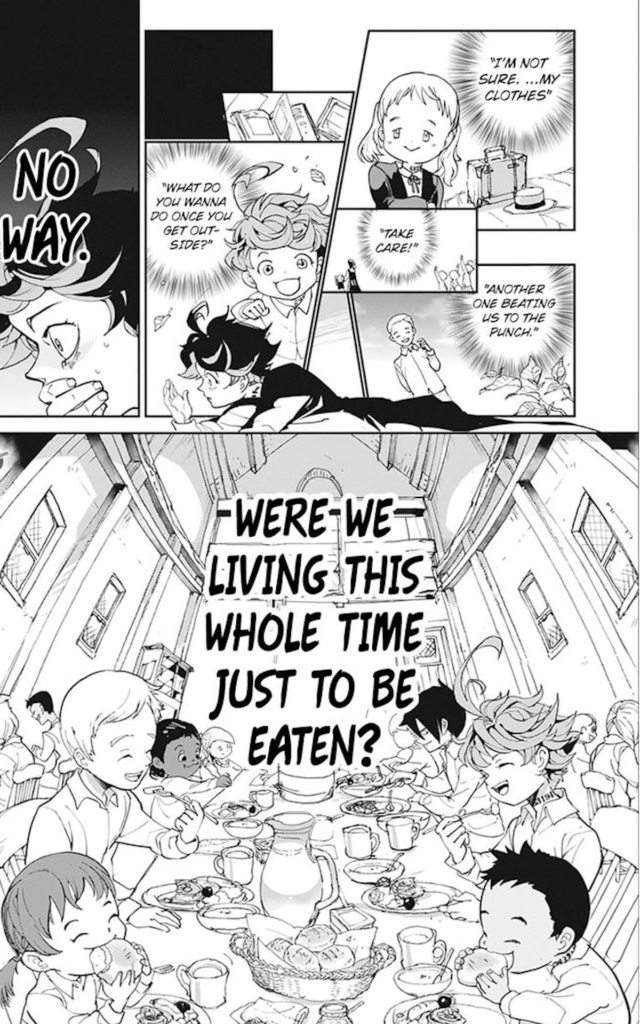
In Classroom, there’s a bittersweet nature to the fate of the children, one that doesn’t necessarily spell an end to the horror – or even the possibility of a return for everyone – but instead they try to find a way to use their new knowledge to change the world. Throughout Classroom, the nature of the wasteland that the characters find themselves in is revealed, through everything between mutants and plague outbreaks to what might be the next stage in human evolution.
It’s only through trying to make peace with this knowledge – with the metaphorical and physical loss that comes with it – that cycles of horror are able to be broken.
